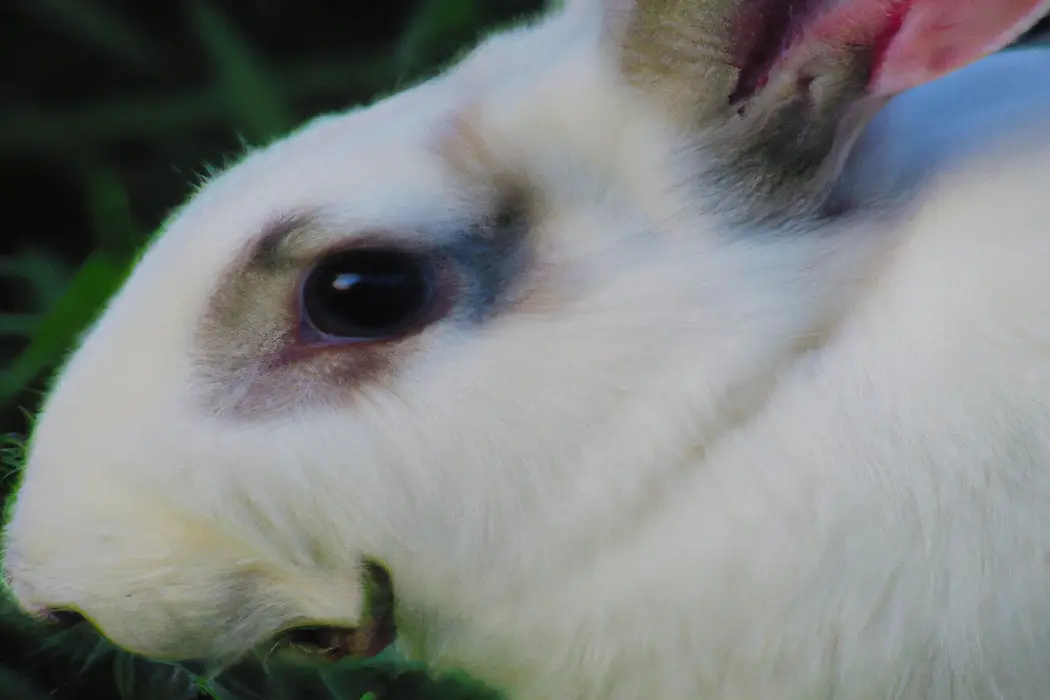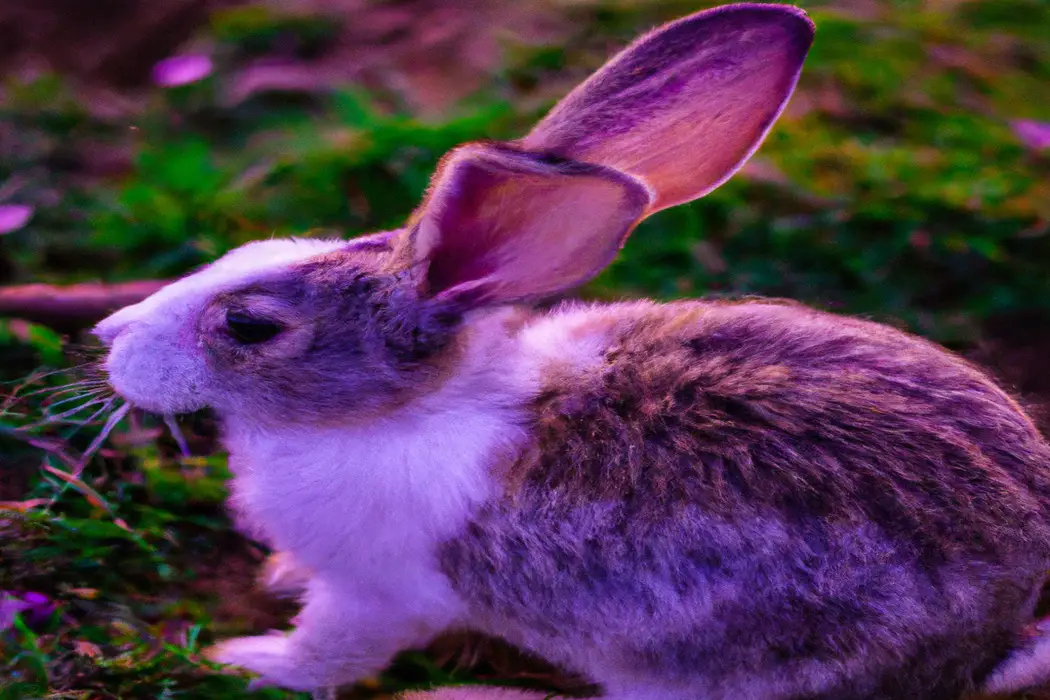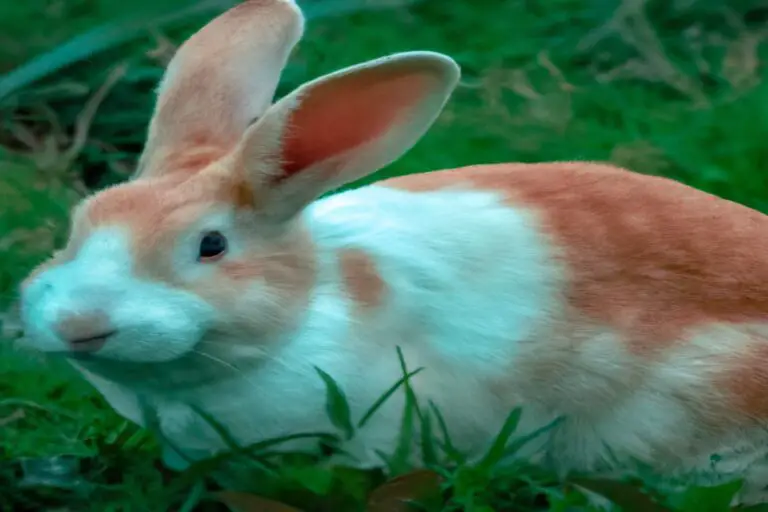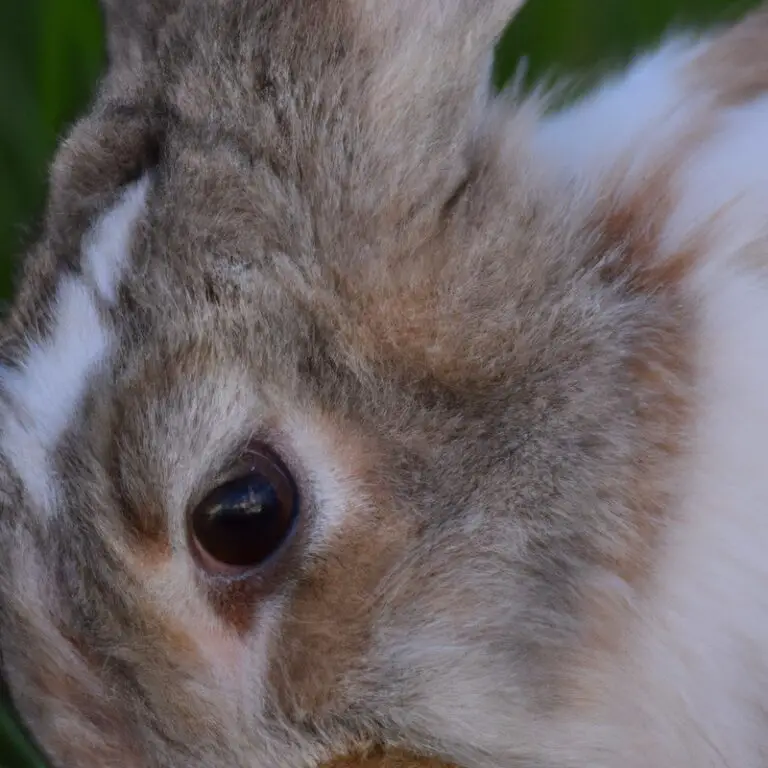Can Rabbits And Goats Live Together Harmoniously?
Key Takeaways:
- Rabbits and goats can live together as long as they have enough space and proper introduction.
- Careful monitoring and occasional separation may be necessary to ensure the safety and well-being of both animals.
- Rabbits and goats have different dietary needs, so it’s important to provide appropriate food for each species.
- Providing separate areas for shelter and rest can help minimize potential conflicts between rabbits and goats.
Are you curious about whether rabbits and goats can coexist harmoniously?
If you’re thinking about keeping these adorable creatures together, then you’ve come to the right place.
In this article, we’ll dive into the pros and cons of housing rabbits and goats together, as well as the important factors to consider before taking the leap.
From space requirements to diet compatibility, we’ll cover it all.
And don’t worry, we won’t leave you hanging – we’ve got some valuable tips to help ensure a successful and happy living arrangement between these two furry friends.
So let’s get started and find out if rabbits and goats can truly be the best of buddies!
| Animals | Can Live Together? |
|---|---|
| Rabbits and Goats | Yes, but with caution |
Can rabbits and goats live together?
Rabbits and goats can live together under certain conditions and with proper supervision.
Pros of keeping rabbits and goats together
Keeping rabbits and goats together has several advantages.
- Companionship: Rabbits and goats can provide each other with companionship and reduce loneliness. They may engage in play and grooming behaviors, promoting overall well-being.
- Space utilization: Both rabbits and goats require space to roam and graze. By keeping them together, you can optimize space utilization and provide them with a larger living area.
- Natural pest control: Goats are known to eat weeds and other unwanted vegetation. By having them share a space with rabbits, who are natural grazers, you can create a symbiotic relationship where the goats help control the vegetation, reducing the need for chemical weed control.
- Manure management: Goats and rabbits produce manure that can be used as excellent natural fertilizers. By keeping them together, you can efficiently manage and utilize the manure for your garden or other agricultural purposes.
- Educational opportunity: If you have children or are interested in learning more about animal behavior, keeping rabbits and goats together can provide a unique learning experience. Observing their interactions and behaviors can be educational and fun.
However, it is important to note that proper introduction, monitoring, and suitable living conditions are crucial to ensuring the well-being and safety of both animals. Regular veterinary care and separate feeding areas are also recommended to prevent health issues and maintain a harmonious living arrangement.
Cons of keeping rabbits and goats together
Keeping rabbits and goats together can have a few drawbacks. One of the main cons is that rabbits can be easily injured by the horns or hooves of goats, especially during play or aggression.
Additionally, rabbits have different dietary needs than goats, so it can be challenging to provide appropriate nutrition for both animals.
Finally, rabbits and goats have different social behaviors, and they may not interact well or understand each other’s body language, leading to possible stress or conflict.
Factors to consider before housing rabbits and goats together
Before housing rabbits and goats together, factors to consider include space requirements, compatibility of diet, and behavioral compatibility.
Space requirements
Space requirements for housing rabbits and goats together are essential for their well-being. Both animals need ample space to move around, exercise, and engage in their natural behaviors.
The recommended minimum space per rabbit is at least 12 square feet, while goats require a minimum of 200-400 square feet per goat.
It is important to provide separate areas for rabbits and goats within the shared space to prevent any potential conflicts and ensure the safety of both animals. Additionally, the enclosure should be secure, with fencing that is rabbit-proof and goat-proof.

Compatibility of diet
Rabbits and goats have different dietary needs and preferences, so it’s important to consider their compatibility of diet before housing them together. While rabbits primarily eat hay, fresh greens, and commercial rabbit pellets, goats have a broader diet that includes hay, grass, shrubs, and grains.
It’s crucial to ensure that both animals have access to their specific food sources to meet their nutritional requirements.
Additionally, some plants that are safe for goats may be harmful to rabbits, so it’s essential to carefully choose the vegetation in their shared space. Regular monitoring and adjustments may be necessary to ensure their dietary needs are met.
Behavioral compatibility
Behavioral compatibility is an important factor to consider before housing rabbits and goats together.
Rabbits are prey animals and goats are grazing animals, so their natural instincts and behaviors may differ.
While some rabbits and goats may get along, it’s crucial to closely monitor their interactions to ensure their safety.
It’s best to introduce them gradually, provide separate areas for each species to retreat to, and observe their behavior for signs of compatibility or aggression.
Tips for successfully housing rabbits and goats together
Provide separate housing areas and ensure adequate space for exercise when housing rabbits and goats together. Monitor their interactions closely to ensure their safety and well-being.
Provide separate housing areas
To ensure the safety and well-being of both rabbits and goats, it is important to provide separate housing areas for them.
Rabbits and goats have different needs and behaviors, and cohabitating can lead to stress, injury, or disease transmission.
Here are some reasons why providing separate housing areas is essential:
- Territoriality: Goats are known to be more dominant and territorial than rabbits. Having separate spaces allows each animal to establish their own territory and feel secure.
- Diet and feeding: Rabbits and goats have different dietary requirements. Separating their feeding areas prevents competition for food and ensures that each animal receives the appropriate diet.
- Risk of injury: Goats have a natural tendency to play and jump, which can unintentionally harm rabbits. Having separate spaces minimizes the risk of accidental injuries.
- Disease prevention: Rabbits and goats can carry different diseases that may be harmful to each other. By keeping them in separate housing areas, you decrease the chances of disease transmission.
By providing separate housing areas, you prioritize the safety, health, and overall well-being of both rabbits and goats.

Ensure adequate space for exercise
To ensure that rabbits and goats live harmoniously together, it is crucial to provide them with adequate space for exercise. Both rabbits and goats are active animals that require ample room to move around and stretch their legs.
A spacious outdoor enclosure or pasture will allow them to engage in natural behaviors such as running, jumping, and climbing.
By providing enough space for exercise, you can help promote their physical and mental well-being, reducing the risk of boredom and behavioral issues.

Monitor their interactions closely
The key to successfully housing rabbits and goats together is to monitor their interactions closely. Watch how they behave around each other to ensure they are getting along and not displaying aggressive behavior.
Keep an eye out for any signs of stress or discomfort, such as chasing, biting, or excessive vocalization.
If any issues arise, separate them immediately to prevent harm. Regular observation is essential to ensure the well-being and safety of both animals in a shared living space.
Frequently Asked Questions
Can rabbits and goats share the same pasture?
Yes, rabbits and goats can share the same pasture. Rabbits and goats have different dietary needs and grazing habits, which minimize competition for food.
However, it is important to monitor their interactions and provide separate areas for each species to retreat to, as goats may inadvertently harm or frighten rabbits.
Providing enough space and carefully introducing the animals to each other can help ensure a peaceful coexistence.
What are the risks of housing rabbits and goats together?
Housing rabbits and goats together can pose several risks.
- Safety concerns: Goats are larger and stronger than rabbits, and their boisterous behavior can accidentally harm or intimidate rabbits. Rabbits may also feel stressed or fearful in the presence of goats, leading to potential health issues.
- Diet disparities: Rabbits have specific dietary requirements that differ from goats. Sharing the same space can result in competition for food, and goats might eat rabbit food, which can be detrimental to the rabbits’ health.
- Disease transmission: Goats and rabbits can carry different diseases that may not affect each other but can be transmitted between species. This can increase the risk of illness and compromise the well-being of both animals.
- Housing compatibility: Rabbits and goats have different environmental needs. Rabbits require secure enclosures with protection from predators, while goats need more open spaces to roam. Mismatched housing arrangements may lead to stress and conflict between the two species.
Considering these risks, it is generally recommended to provide separate housing for rabbits and goats to ensure the safety and well-being of both animals.
How do I introduce rabbits and goats to each other?
To introduce rabbits and goats to each other, start by providing separate enclosures where they can see, smell, and hear each other without direct contact.
Gradually introduce short supervised sessions where they can interact in a neutral area.
Pay close attention to their body language and behavior, and separate them if any signs of aggression or stress occur.
Allow them to spend more time together as they become more comfortable, always supervising their interactions and providing plenty of space, hiding spots, and resources for both animals.
Patience and gradual introductions are key to helping them form a positive relationship.
Final Verdict
Rabbits and goats can live together under the right circumstances. There are pros and cons to consider, such as their complementary diets and the risk of aggressive behavior.
Factors like space requirements, diet compatibility, and behavioral compatibility must be carefully considered before housing them together.
By providing separate housing areas, adequate space for exercise, and closely monitoring their interactions, it is possible to successfully house rabbits and goats together. However, it is important to remember that each situation is unique and careful introduction and monitoring is key.
Proceed with caution and ensure the safety and well-being of both animals.







